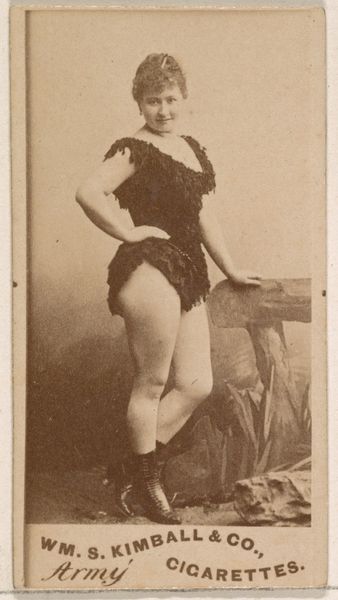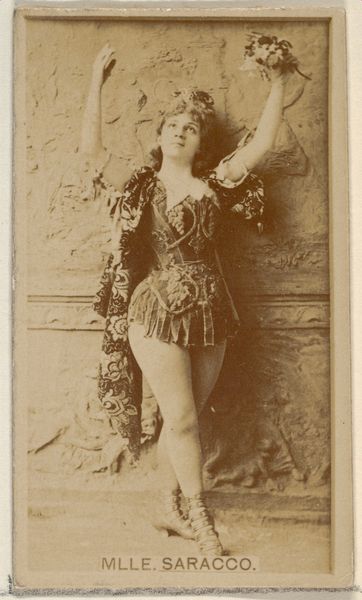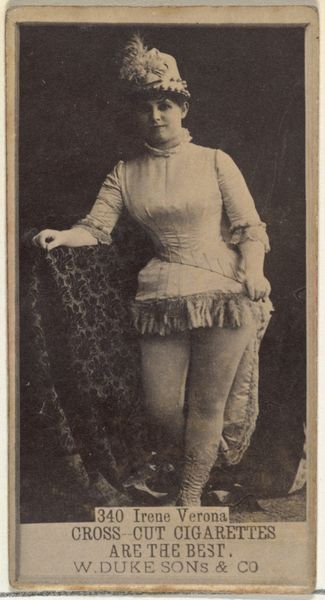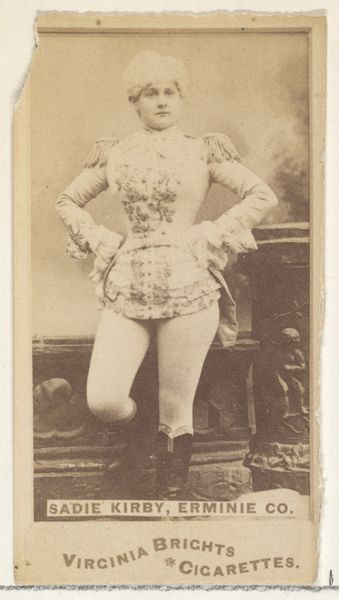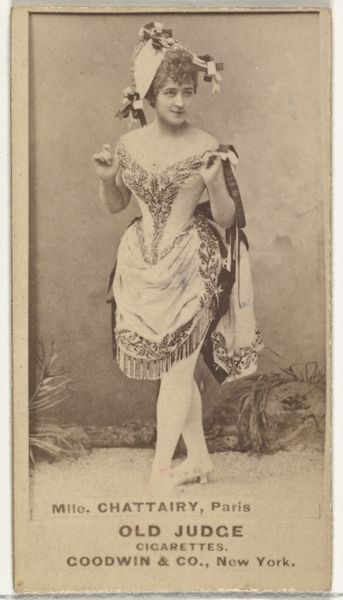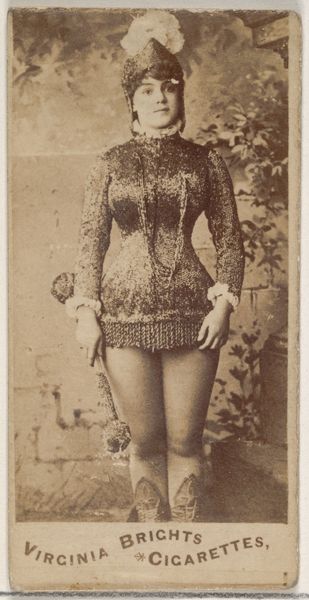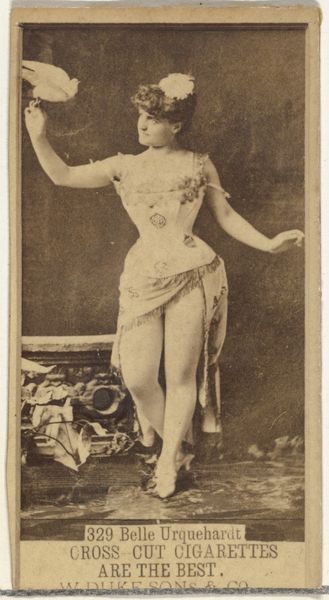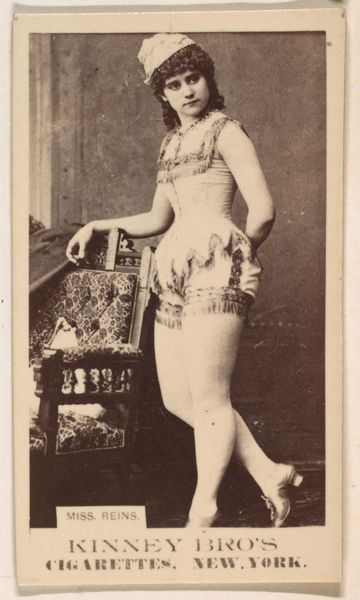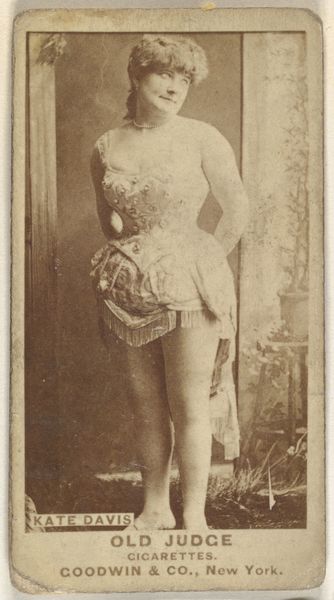
Harriett Vernon, from the Actresses series (N245) issued by Kinney Brothers to promote Sweet Caporal Cigarettes 1890
0:00
0:00
drawing, print, photography
#
portrait
#
drawing
# print
#
caricature
#
photography
Dimensions: Sheet: 2 1/2 × 1 7/16 in. (6.4 × 3.7 cm)
Copyright: Public Domain
Curator: Immediately striking, isn't it? There's an undeniable directness to this portrait, one that might even veer into a confrontational gaze. Editor: Indeed. What exactly are we looking at here? Curator: This is Harriett Vernon from the "Actresses" series (N245), created in 1890 by Kinney Brothers, the tobacco company, to promote Sweet Caporal Cigarettes. This print, now residing at The Met, is derived from a photographic source, although it has aspects that border on caricature. It offers an interesting view of commerce mingling with popular culture and even art, depending on your point of view, of course. Editor: It's a cigarette card, essentially. Small, reproducible... And she really stares you down, doesn't she? The image of this woman, reproduced on, say, thousands of cards, handled by people smoking cigarettes…It seems somehow so immediate, tangible, and oddly unsettling. The scale enhances the intimacy somehow. You almost feel like you could know her... Curator: Absolutely. The mode of distribution profoundly impacts the reception. These cards were not meant for museum walls, but rather pockets and bars. We have an encounter here where the intended use of these objects encourages repeat handling and therefore viewing. Editor: It also complicates our usual notions about celebrity portraits in this time period. It's not high art. What did Harriett Vernon, the actress, think about being rendered like this, so available, in the service of...cigarettes? Were these collaborations empowering for actresses at the time, or was this pure exploitation of a famous image? Curator: The photographic processes of that era were themselves also tied up with capitalist processes, reliant on specific materials sourced and labor deployed to create objects like this. Each card passed through the hands of factory workers, distributors, and then finally the consumers. Consider it almost like a tiny monument to that industry, literally small enough to hold in one's hand. Editor: So, more than a picture of Harriett Vernon, we're viewing a small part of a larger system, of commodification and consumerism... Fascinating. Thanks for making me think about that, literally, held in the palm of one's hand. Curator: A pleasure as always, the beauty, or lack thereof, often lies in understanding what hides in plain sight.
Comments
No comments
Be the first to comment and join the conversation on the ultimate creative platform.

